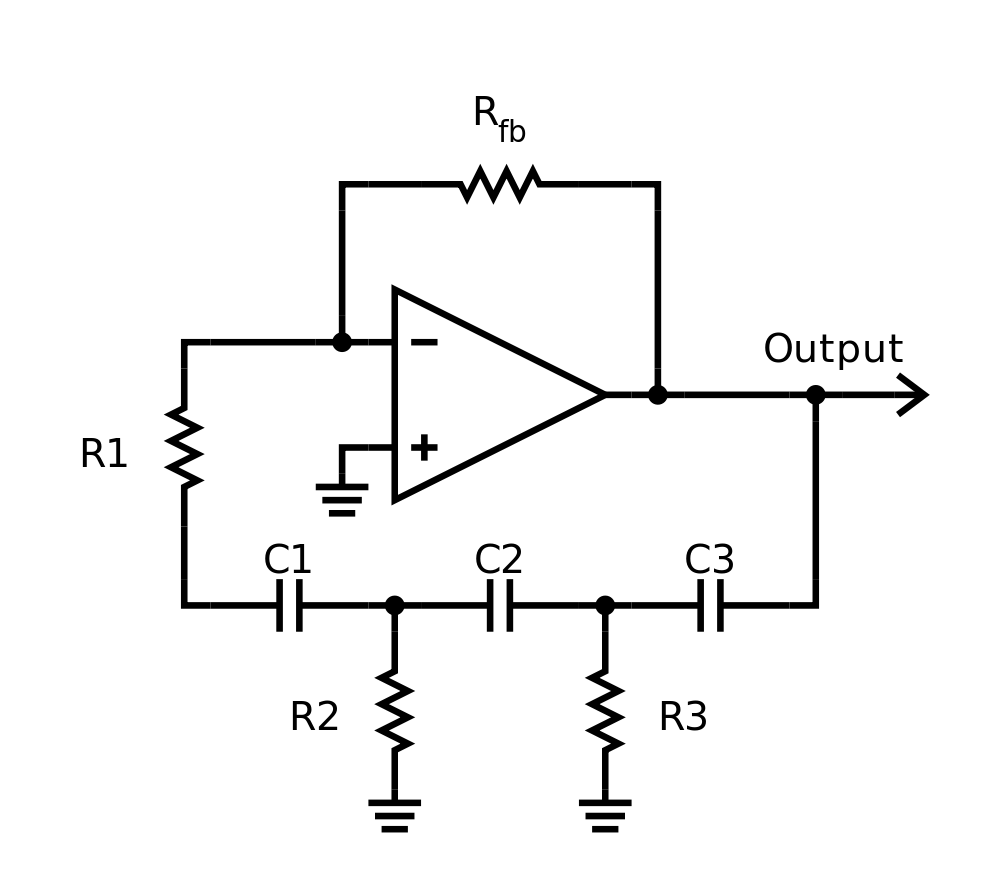What are the basic components of virtually all sine wave oscillators?
A. An amplifier and a divider
B. A frequency multiplier and a mixer
C. A circulator and a filter operating in a feed-forward loop
D. A filter and an amplifier operating in a feedback loop
To answer this question, lets look at what makes up a sine wave oscillator circuit. For radio purposes, we will normally see what’s referred to as an “RC” oscillator, made of a network of resistors (R) and capacitors (C).
Essentially how it works, is that the output of a circuit, which is tuned using that RC network, or filter, is fed back into itself, so we’ve met the condition of feedback. There is an amplifier in place to continuously compensate for the losses incurred while doing this, due to heat, radiation, etc. That’s it. That’s basically the textbook definition of an electronic oscillator.
There are several different types of oscillator circuits, but the image above is an example of a “phase shift” oscillator. (https://en.wikipedia.org/wiki/Phase-shift_oscillator)
Therefore, the answer is D. A filter and an amplifier operating in a feedback loop
(image: A filter and an amplifier operating in a feedback loop)

